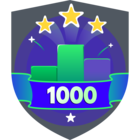If you haven’t heard, Veeam Disaster Recovery Orchestrator v4 (formerly known as Veeam Availability Orchestrator) is now available, and better than ever.
Now VDRO can orchestrate recovery for 4 types of your protected data:
- Veeam CDP Replicas - NEW in v4
- Veeam Replicas
- Veeam Backups
- Replicated Storage Snapshots (NetApp ONTAP and Lenovo ThinkSystem DM)
This means you have the ultimate in flexibility and choice when it comes to protecting all of the data in your environment. From mission critical apps, to those dev environments that would be nice to recover easily but are usually ignored for DR planning purposes, you can do it all with the same tool, the same way.
It couldn’t be simpler to create a DR plan in Orchestrator. Check out this video where I create a CDP Replica orchestration plan, run a readiness check, and launch a failover in less than 10 minutes.
There are some subtle differences between plan types, but yes, Orchestrator is really that easy to use.
You can even get granular and customize the plan steps to be run on each VM. Orchestrator is packed with out of the box enterprise application verification steps to make creating a plan easy, and you can upload any PowerShell script you would like and have Orchestrator run it.
Now, let’s talk about one of my favorite features of Orchestrator, the documentation it dynamically generates. I know documentation isn’t something that gets many technologists excited, but if you’ve ever had to write a DR plan, you are going to jump for joy when I tell you Orchestrator will do it for you from now on.
VDRO creates a fully documented disaster recovery plan to meet compliance and audit requirements, which it calls the Plan Definition Report. This DR plan template can be customized to meet an organization’s needs, whatever they may be, and the template is simple to edit in Microsoft Word. It even has a change log that shows you who made changes when, and can automatically be e-mailed to key stakeholders on a daily basis.
If a DR plan easy button wasn’t enough, Orchestrator also creates three other types of documents that can once again, be automatically e-mailed.
The Readiness Check is a light weight check that runs daily, and makes sure you’re always ready to failover. It verifies your RPO (and SLA for CDP Replica Plans), and takes a look at the overall health of your disaster recovery environment. Let’s face it, your DR site probably just sits there all alone and is ignored. Orchestrator will let you know handy things like if you have a host in maintenance mode, or if your vSphere environment is unreachable so you can take action before a disaster happens.
The DataLab Test Report is the report that is generated after a DataLab Test, which takes just a few clicks to start. A DataLab test stars your application in an isolated environment and runs your DR plan! It will once again verify you can meet your RPO, and also your RTO. Another cool feature is the ability to leave the DataLab running after the test is complete to provide application teams a copy of their production environment, which they can access right from the Orchestrator UI.
Last, but not least is of course the Plan Execution Report which shows you exactly what has happened in you environment after you have run an Orchestration Plan. Of course, everything has worked perfectly because with the combination of Readiness Checks and DataLab Tests, you’ve already fixed anything that wasn’t working quite right before disaster time.
Don’t believe me? Run, don’t walk and grab yourself a 30 day free trial of Veeam Disaster Recovery Orchestrator today!
I’m going to let you in on a dirty little secret too – if you build a VM with 8 CPU and 16 GB of RAM to install Orchestrator on, you can get a good feeling of how Veeam CDP works! Included with Veeam Disaster Recovery Orchestrator is also an embedded version of Veeam Backup & Replication and Veeam ONE Orchestrator edition. While the embedded Veeam one doesn’t collect performance data, it can monitor your CDP SLA just fine for testing purposes! Ping me if you have any questions on getting started and happy orchestrating!


